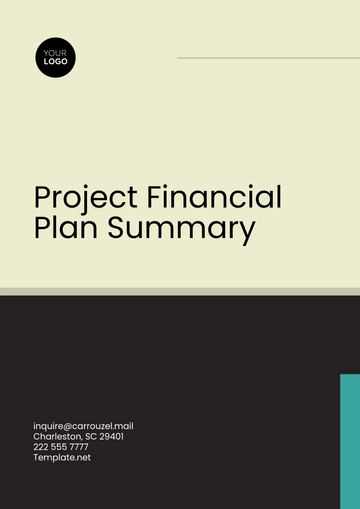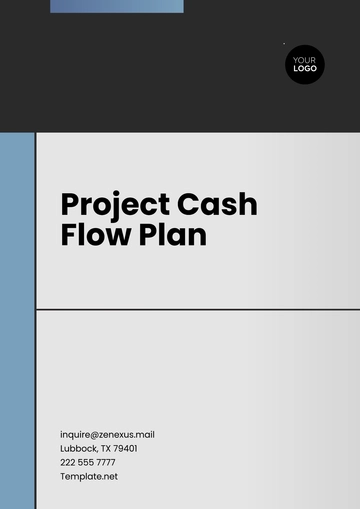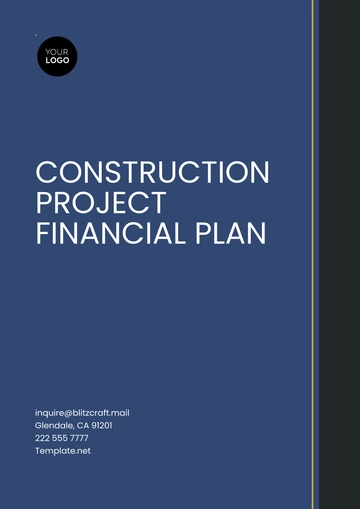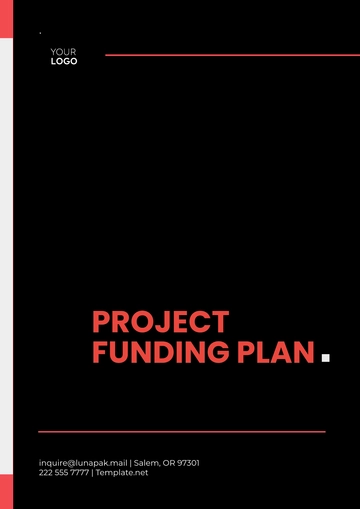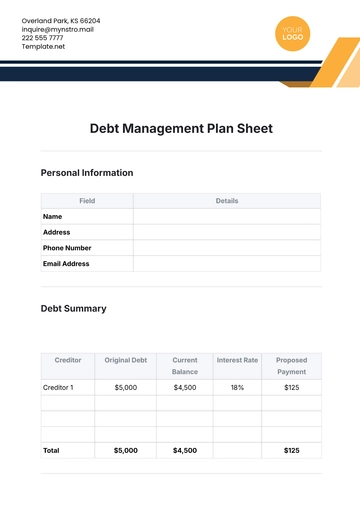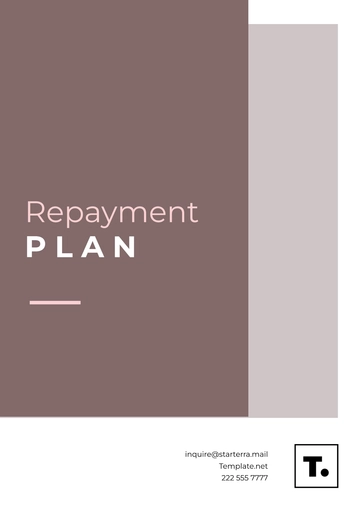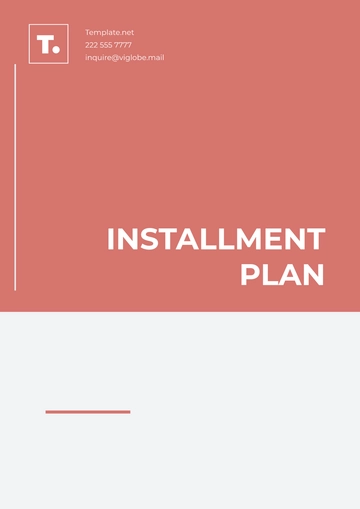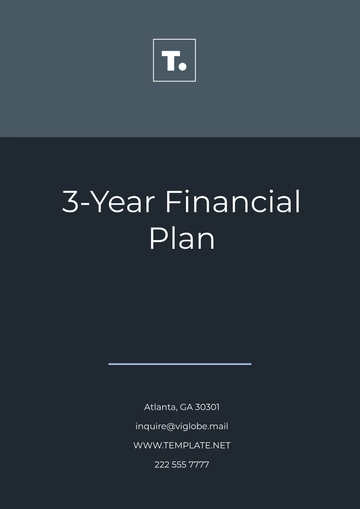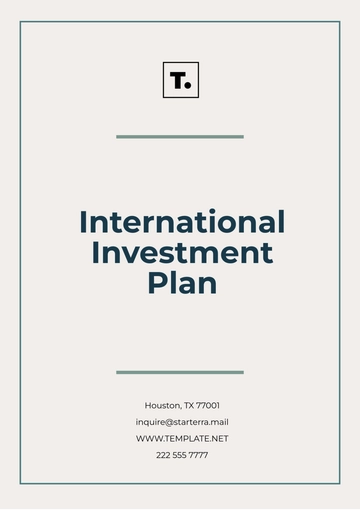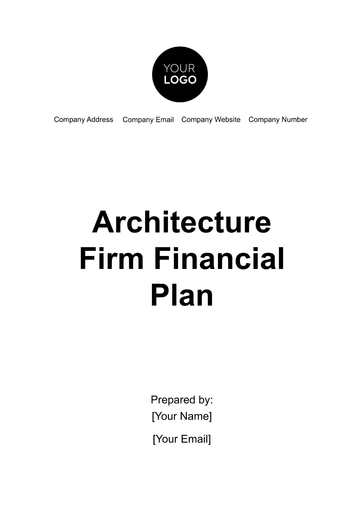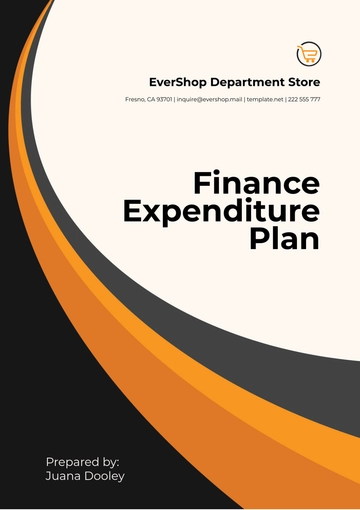Free Finance Expenditure Plan
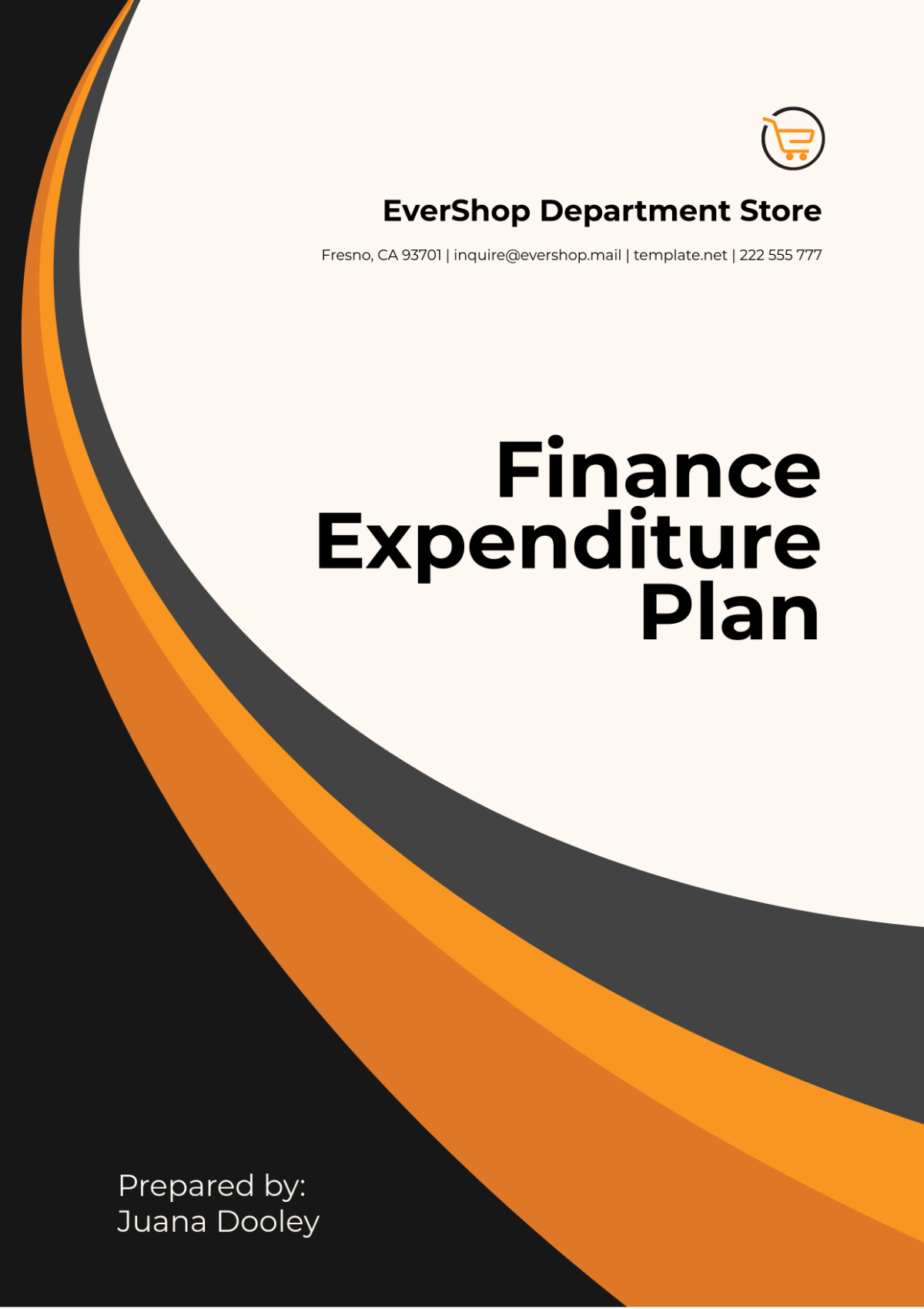
I. Introduction
The Finance Expenditure Plan for [Your Company Name] outlines the anticipated financial outflows for the year [2051]. This plan serves as a guiding document to ensure that all financial resources are allocated efficiently across various departments and initiatives within the company. By carefully managing expenditures, [Your Company Name] aims to maintain financial stability, support growth objectives, and maximize return on investment.
Objectives
Establishing clear objectives for the expenditure plan helps align spending with the company’s strategic goals. These objectives serve as benchmarks for evaluating the effectiveness of the financial allocations throughout the year.
Optimize Resource Allocation: Ensure that resources are distributed efficiently across all departments, prioritizing investments that drive growth and operational efficiency.
Control Operating Costs: Implement cost-control measures to maintain or reduce operating expenses, contributing to overall profitability and financial health.
Support Strategic Initiatives: Allocate funds to key strategic projects and initiatives that align with the company’s long-term vision and objectives.
Maintain Financial Flexibility: Preserve a portion of the budget for unforeseen expenses or opportunities, ensuring the company can adapt to changing circumstances without financial strain.
II. Projected Expenditures
A detailed breakdown of projected expenditures provides a clear view of where the company’s financial resources will be directed. This section outlines the major categories of spending and their associated costs.
Operating Expenses: Day-to-day expenses required for the smooth functioning of the business, including rent, utilities, and administrative costs.
Salaries and Wages: Compensation for employees, including base salaries, bonuses, and benefits. This category reflects the company's investment in its workforce.
Technology and Infrastructure: Investments in software, hardware, and other technological infrastructure necessary to support operations and enhance productivity.
Marketing and Advertising: Funds allocated to promote the company’s services, build brand awareness, and generate new business leads.
Research and Development (R&D): Expenditures related to the development of new financial products or services, as well as improvements to existing offerings.
Legal and Compliance: Costs associated with legal services, compliance requirements, and regulatory fees to ensure the company operates within the law.
III. Budget Allocation
Allocating the budget effectively across different categories is crucial for maintaining financial discipline and achieving the company’s strategic goals. This section provides a detailed allocation of the budget.
Expense Category | Budget Allocation |
|---|---|
Operating Expenses | $1,200,000 |
Salaries and Wages | $3,500,000 |
Technology and Infrastructure | $800,000 |
Marketing and Advertising | $1,000,000 |
Research and Development (R&D) | $600,000 |
Legal and Compliance | $400,000 |
Total | $7,500,000 |
The table above shows a balanced allocation of the budget across key expenditure categories. Salaries and wages constitute the largest portion, reflecting the company's commitment to its employees. Significant investments in marketing and technology underscore the firm’s focus on growth and operational efficiency.
IV. Cash Flow Management
Effective cash flow management is essential for ensuring that the company has sufficient liquidity to meet its obligations and seize opportunities. This section outlines strategies for managing cash flow throughout the year.
Regular Cash Flow Monitoring: Implement a robust system for tracking cash inflows and outflows on a regular basis, allowing for timely adjustments to spending as needed.
Maintain Cash Reserves: Set aside a portion of cash reserves to cover unexpected expenses or opportunities, ensuring the company can navigate financial uncertainties.
Payment Scheduling: Strategically schedule payments to vendors and creditors to optimize cash flow, taking advantage of early payment discounts where available.
Revenue Forecasting: Regularly update revenue forecasts based on actual performance, adjusting expenditure plans accordingly to maintain financial balance.
V. Risk Management
Managing financial risks is critical to protecting the company’s assets and ensuring long-term stability. This section outlines the key financial risks and the strategies to mitigate them.
Market Risk: Monitor market conditions closely and adjust investment and spending strategies to mitigate the impact of economic fluctuations.
Credit Risk: Assess the creditworthiness of clients and partners to minimize the risk of bad debts and ensure timely payments.
Operational Risk: Implement strong internal controls and regularly review operational processes to prevent fraud, errors, and inefficiencies.
Regulatory Risk: Stay informed of regulatory changes and ensure compliance to avoid legal penalties and reputational damage.
VI. Performance Monitoring and Evaluation
Continuous monitoring and evaluation of financial performance are essential for ensuring that the expenditure plan is on track. This section describes the methods for tracking and assessing financial performance.
Monthly Financial Reports: Generate monthly financial reports to track actual expenditures against the budget, identifying variances and areas requiring attention.
Quarterly Reviews: Conduct quarterly financial reviews with senior management to evaluate performance, discuss challenges, and adjust plans as needed.
Key Performance Indicators (KPIs): Establish and monitor KPIs related to cost management, profitability, and return on investment to assess the effectiveness of the expenditure plan.
Annual Financial Audit: Perform an annual financial audit to ensure accuracy, transparency, and compliance with financial regulations.
VII. Next Steps
To implement the Finance Expenditure Plan effectively, it is essential to outline the immediate next steps. This section provides actionable items to move forward with the plan.
Finalize and Approve the Budget: Review the budget allocation with senior management and secure approval to proceed with the expenditure plan.
Assign Responsibilities: Designate department heads to manage their respective budget allocations and monitor spending.
Implement Monitoring Systems: Set up the necessary financial monitoring systems and tools to track expenditures and cash flow in real-time.
Schedule Quarterly Reviews: Plan the dates for quarterly financial reviews to ensure ongoing assessment and adjustment of the expenditure plan.
The Finance Expenditure Plan for [Your Company Name] for the year [2051] is designed to ensure that financial resources are allocated efficiently and effectively to support the company's strategic objectives. Continuous monitoring and evaluation will be key to the successful implementation of this plan, enabling the company to make informed decisions and adjustments as needed throughout the year.
- 100% Customizable, free editor
- Access 1 Million+ Templates, photo’s & graphics
- Download or share as a template
- Click and replace photos, graphics, text, backgrounds
- Resize, crop, AI write & more
- Access advanced editor
Manage your finances effectively with our Finance Expenditure Plan Template from Template.net. Fully customizable and editable, this template offers a comprehensive layout for tracking and planning expenses. Easily personalize the expenditure plan, editable in our Ai Editor Tool, to align with your financial goals and budget constraints. Download now!
You may also like
- Finance Plan
- Construction Plan
- Sales Plan
- Development Plan
- Career Plan
- Budget Plan
- HR Plan
- Education Plan
- Transition Plan
- Work Plan
- Training Plan
- Communication Plan
- Operation Plan
- Health And Safety Plan
- Strategy Plan
- Professional Development Plan
- Advertising Plan
- Risk Management Plan
- Restaurant Plan
- School Plan
- Nursing Home Patient Care Plan
- Nursing Care Plan
- Plan Event
- Startup Plan
- Social Media Plan
- Staffing Plan
- Annual Plan
- Content Plan
- Payment Plan
- Implementation Plan
- Hotel Plan
- Workout Plan
- Accounting Plan
- Campaign Plan
- Essay Plan
- 30 60 90 Day Plan
- Research Plan
- Recruitment Plan
- 90 Day Plan
- Quarterly Plan
- Emergency Plan
- 5 Year Plan
- Gym Plan
- Personal Plan
- IT and Software Plan
- Treatment Plan
- Real Estate Plan
- Law Firm Plan
- Healthcare Plan
- Improvement Plan
- Media Plan
- 5 Year Business Plan
- Learning Plan
- Marketing Campaign Plan
- Travel Agency Plan
- Cleaning Services Plan
- Interior Design Plan
- Performance Plan
- PR Plan
- Birth Plan
- Life Plan
- SEO Plan
- Disaster Recovery Plan
- Continuity Plan
- Launch Plan
- Legal Plan
- Behavior Plan
- Performance Improvement Plan
- Salon Plan
- Security Plan
- Security Management Plan
- Employee Development Plan
- Quality Plan
- Service Improvement Plan
- Growth Plan
- Incident Response Plan
- Basketball Plan
- Emergency Action Plan
- Product Launch Plan
- Spa Plan
- Employee Training Plan
- Data Analysis Plan
- Employee Action Plan
- Territory Plan
- Audit Plan
- Classroom Plan
- Activity Plan
- Parenting Plan
- Care Plan
- Project Execution Plan
- Exercise Plan
- Internship Plan
- Software Development Plan
- Continuous Improvement Plan
- Leave Plan
- 90 Day Sales Plan
- Advertising Agency Plan
- Employee Transition Plan
- Smart Action Plan
- Workplace Safety Plan
- Behavior Change Plan
- Contingency Plan
- Continuity of Operations Plan
- Health Plan
- Quality Control Plan
- Self Plan
- Sports Development Plan
- Change Management Plan
- Ecommerce Plan
- Personal Financial Plan
- Process Improvement Plan
- 30-60-90 Day Sales Plan
- Crisis Management Plan
- Engagement Plan
- Execution Plan
- Pandemic Plan
- Quality Assurance Plan
- Service Continuity Plan
- Agile Project Plan
- Fundraising Plan
- Job Transition Plan
- Asset Maintenance Plan
- Maintenance Plan
- Software Test Plan
- Staff Training and Development Plan
- 3 Year Plan
- Brand Activation Plan
- Release Plan
- Resource Plan
- Risk Mitigation Plan
- Teacher Plan
- 30 60 90 Day Plan for New Manager
- Food Safety Plan
- Food Truck Plan
- Hiring Plan
- Quality Management Plan
- Wellness Plan
- Behavior Intervention Plan
- Bonus Plan
- Investment Plan
- Maternity Leave Plan
- Pandemic Response Plan
- Succession Planning
- Coaching Plan
- Configuration Management Plan
- Remote Work Plan
- Self Care Plan
- Teaching Plan
- 100-Day Plan
- HACCP Plan
- Student Plan
- Sustainability Plan
- 30 60 90 Day Plan for Interview
- Access Plan
- Site Specific Safety Plan

